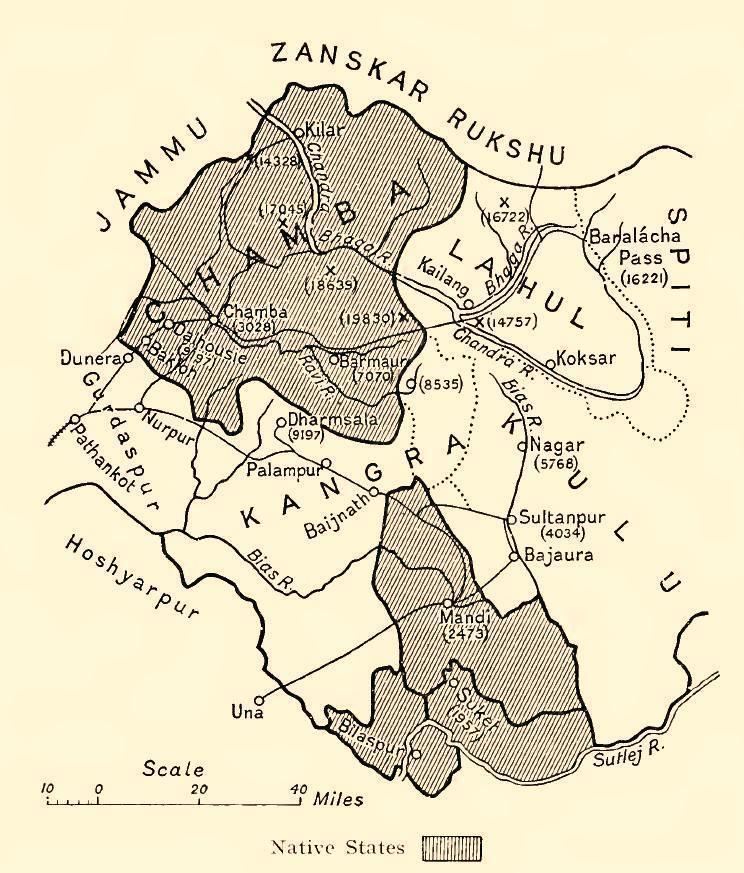 | ||
The Hill States of India were princely states lying in the northern border regions of the British Indian Empire.
Contents
History
During the colonial Raj period, two groups of princely states in direct relations with the Province of British Punjab became part of the British Indian Empire later than most of the former Mughal Empire, in the context of two wars and an uprising.
For its princely rulers the informal term Hill Rajas has been coined. After the independence and split-up of British India, the Hill States acceded to the new Union of India and were later divided between India's constituent states of Punjab (proper), Haryana and Himachal Pradesh.
Simla Hills
28 princely states (including feudatory princes and zaildars) in the promontories of the western Himalaya were named after Shimla as the Simla Hill States. These states were ruled mainly by Hindu Rajputs. Their inhabitants were mainly Hindu with a few Buddhists; the local languages were Hindi, Punjabi, Urdu and various Pahari dialects.
Three quarters of the about 4,800 square miles (12,000 km2), on both sides of the Sutlej river, was the territory of the Raja (earlier Rana) of Bashahr. The direct tributaries of Bashahr were:
The other, all far smaller, princely states, including a few with some petty dependencies of their own, were further south, on the left bank of the Sutlej:
NB - For various of the entities above, the authentic title of the chieftain is missing. While some of the lowest ranking may have had none, for the princes that can merely be due to insufficient sources available
The princely states of the Simla Hills all ultimately became part of the modern Indian state of Himachal Pradesh.
States of the Punjab Hills
Some nearby Hindu and Sikh states include :
